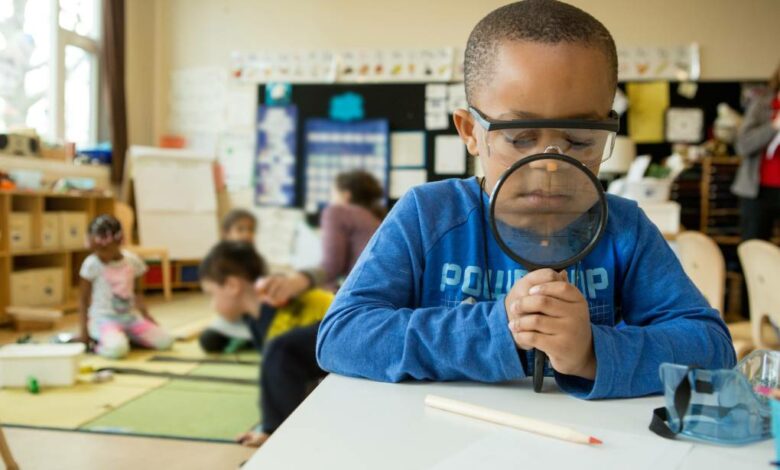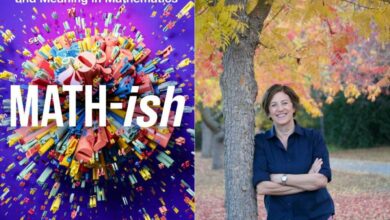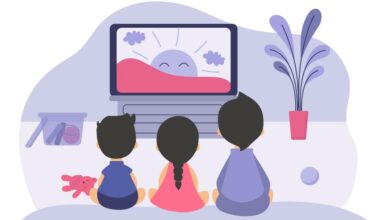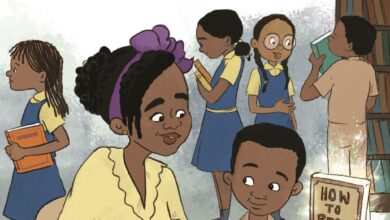Learning science might help kids read better

In 2019, a group of researchers, led by James Kim, a professor at Harvard University’s Graduate School of Education, randomly selected 15 of the district’s 30 elementary schools to teach first graders special knowledge-building lessons for three years, through third grade. Kim, a reading specialist, and other researchers had developed two sets of multi-year lesson plans, one for science and one for social studies. Students were also given related books to read during the summer. (This research was funded by the Chan Zuckerberg Initiative, which is among the many funders of The Hechinger Report.)
The remaining 15 elementary schools in the district continued to teach their students as usual, still delivering some social studies and science instruction, but not these special lessons. Regular reading class was untouched in the experiment. All 30 schools were using the same reading curriculum, Expeditionary Learning, which follows science of reading principles and teaches phonics.
COVID-19 hit in the middle of the experiment. When schools shut down in the spring of 2020, the researchers scrapped the planned social studies units for second graders. In 2021, students were still not attending school in person. The researchers revised their science curriculum and decided to give an abridged online version to all 30 schools instead of just half. In the end, children in the original 15 schools received one year of social studies lessons and three years of science lessons compared to only one year of science in the comparison group.
Still, approximately 1,000 students who had received the special science and social studies lessons in first and second grades outperformed the 1,000 students who got only the abbreviated online science in third grade. Their reading and math scores on the North Carolina state tests were higher not only in third grade, but also in fourth grade, more than a year after the knowledge-building experiment ended.
It wasn’t a huge boost to reading achievement, but it was significant and long-lasting. It cost about $400 per student in instructional materials and teacher training.
Timothy Shanahan, a literacy expert and a professor emeritus at the University of Illinois at Chicago who was not involved in this research or the development of these science lessons, praised the study. “The study makes it very clear (as have a few others recently) that it is possible to combine reading with social studies and science curriculum in powerful ways that can improve both literacy and content knowledge,” he said by email.
Connecting background knowledge to reading comprehension is not a new idea. A famous 1987 experiment documented that children who were weaker readers but knowledgeable about baseball understood a reading passage about baseball better than children who were stronger readers but didn’t know much about the sport.
Obviously, it’s not realistic for schools to attempt to familiarize students with every topic they might encounter in a book. And there is disagreement among researchers about how general knowledge of the world translates into higher reading performance.
Kim thinks that a knowledge-building curriculum doesn’t need to teach many topics. Random facts, he says, are not important. He argues for depth instead of breadth. He says it’s important to construct a thoughtful sequence of lessons over the years, allowing students to see how the same patterns crop up in different ways. He calls these patterns “schemas.” In this experiment, for example, students learned about animal survival in first grade and dinosaur extinction in second grade. In third grade, that evolved into a more general understanding of how living systems function. By the end of third grade, many students were able to see how the idea of functioning systems can apply to inanimate objects, such as skyscrapers.
It’s the patterns that can be analogized to new circumstances, Kim explained. Once a student is familiar with the template, a new text on an unfamiliar topic can be easier to grasp.
Kim and his team also paired the science lessons with clusters of vocabulary words that were likely to come up again in the future – almost like wine pairings with a meal.
The full benefits of this kind of knowledge building didn’t materialize until after several years of coordinated instruction. In the first years, students were only able to transfer their ability to comprehend text on one topic to another if the topics were very similar. This study indicates that as their content knowledge deepened, their ability to generalize increased as well.
There’s a lot going on here: a spiraling curriculum that revisits and builds upon themes year after year; an explicit teaching of underlying patterns; new vocabulary words, and a progression from the simple to the complex.
There are many versions of knowledge-rich curricula and this one isn’t about exposing students to a classical canon. It remains unclear if all knowledge-building curricula work as well. Other programs sometimes replace the main reading class with knowledge-building lessons. This one didn’t tinker with regular reading class.
The biggest challenge with the approach used in the North Carolina experiment is that it requires schools to coordinate lessons across grades. That’s hard. Some teachers may want to keep their favorite units on, say, growing a bean plant, and may bristle at the idea of throwing away their old lesson plans.
It’s also worth noting that students’ math scores improved as much as their reading scores did in this North Carolina experiment. It might seem surprising that a literacy intervention would also boost math. But math also requires a lot of reading; the state’s math tests were full of word problems. Any successful effort to boost reading skills is also likely to have positive spillovers into math, researchers explained.
School leaders are under great pressure to boost test scores. To do that, they’ve often doubled time spent on reading and cut science and social studies classes. Studies like this one suggest that those cuts may have been costly, further undermining reading achievement instead of improving it. As researchers discover more about the science of reading, it may well turn out to be that more time on science itself is what kids need to become good readers.




